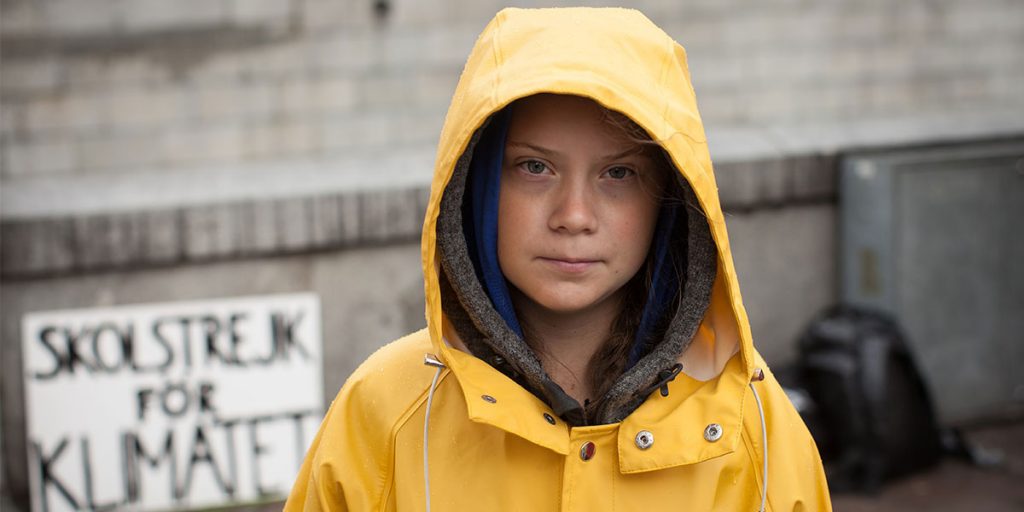I Am Greta is a 2020 biopic that aims to humanize the figure of young climate activist Greta Thunberg, but fails to paint a fair portrait.
Greta Thunberg is a curious object of contemplation. In the same way you’d go to a zoo and wait in front of the cage for the little monkey to twist around itself while peeling a banana, the whole world squeezes tight on social media in wait for the next– incomprehensibly– divisive sentence worded by Greta. If the Greta you are used to seeing portrayed on liberal media is the object of continuous poetic waxing, coming close to a messiah, it comes across as contradictory to hear the conservative FOX News describe her as “a mentally ill Swedish child who is being exploited by her parents and the media.” So, where does the truth lie? I Am Greta is the documentary that aims to eliminate the discrepancy between the different narrations that the media make of Thunberg, converging them into the affectionate tale of a simple girl. The biopic’s story revolves around a girl named Greta who has a dream, to preserve nature, and has Asperger syndrome, and who was nonetheless and therefore able to make herself heard from leaders all over the world about the imminent climate crisis. Simple as that.
Nathan Grossman’s biopic opens up under the premise of intimately and unbiasedly representing the behind the scenes of Thunberg’s public life as the leader of the climate change movement, starting from the school strike at the start of 2018. The director – a self-defined “one-man band”– had met Thunberg through fortuitous coincidences and with no clear intentions of making her the subject of a film. In fact, he only decided to start filming her outside of school while she articulated the reasons why she wasn’t attending class. Thunberg’s answer was captured on film, and it’s flooring: she says that no one was doing anything for the climate, so she had to. The messianic rhetoric is interestingly recurring across the movie, and it’s likely the take that Grossman meant to have on Thunberg. In fact, as the story spans across time, it comes naturally to see Greta as a Christian reincarnation.
The symbolism is poignant: For instance, in one of the first shots of the Fridays for Future protest (a march brought forth by Thunberg to claim climate change action), we see Greta brandishing a sign and carrying it, just like we are used to seeing Jesus carry the cross in religious paintings. Again, the film follows Thunberg in her 2019 carbon neutral ocean crossing on board of a minuscule boat to reach the ONU Conference held in New York City. Multiple times does the camera capture the young girl, only surrounded by the deep ocean, crying and shrieking “I don’t want to have to do this”. In the occidental culture’s tradition, these scenes are intrinsically linked to the so-called “temptation of Christ”, when he is, in fact, tested in the wilderness.

The Atlantic Ocean scenes, which chronologically conclude the film, are incisive in as far as they are basically the only concealed scenes that the public eye hasn’t already seen: this is particularly significant because nothing else Grossman shows us, up to that point, is really new, either because it was covered on the news or on social media. It’s in these rare moments that we get glimpses of what the director meant with “humanizing Greta”, because she’s moving around the screen for no one else but herself. She’s a girl that’s in the middle of the ocean just to prove her point and how truly she believes in it.
The film is built up with fragments: recordings of Greta at an early age taken by her parents, official videos of conferences and presidential meetings, and behind the scenes, with the intention of giving a realist portrait of the activist. However, most scenes in this documentary are mechanically constructed. For instance, half time into the film, we see Greta wake up in the middle of the night to the news of the burning of the Amazon forest, and react to it. Artificiality is not something that the audience needs to see when entering into a movie theater. The audience needs to believe in what’s shown. Artificiality is especially not relevant in this particular film, that aims to prove that behind this young girl’s intentions there are no conspiracies, but only herself. This way, the whole purpose set by the director misses its shot and frustrates the efforts.
One scene is particularly precious: Greta meets French President Emmanuel Macron at the presidential house. They discuss the main points of her climate action program, and Thunberg floors Macron with some hyper specific data. He then asks her if she reads much, and she shyly blushes and answers “yeah, I’m a nerd”. Here, the young activist is portrayed in all her brittleness, meeting up with the initial purpose of the film. Director Grossman should have encapsulated more scenes like these: moments that achieve honesty and transparency. There should have been less prying BTS scenes that only achieve divisiveness in the audience, since that is the last thing that Greta needs right now.
I am Greta is now available to watch on digital and on demand.

